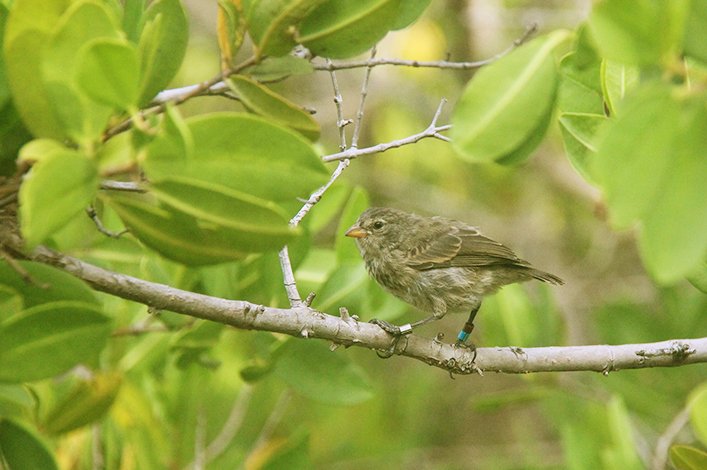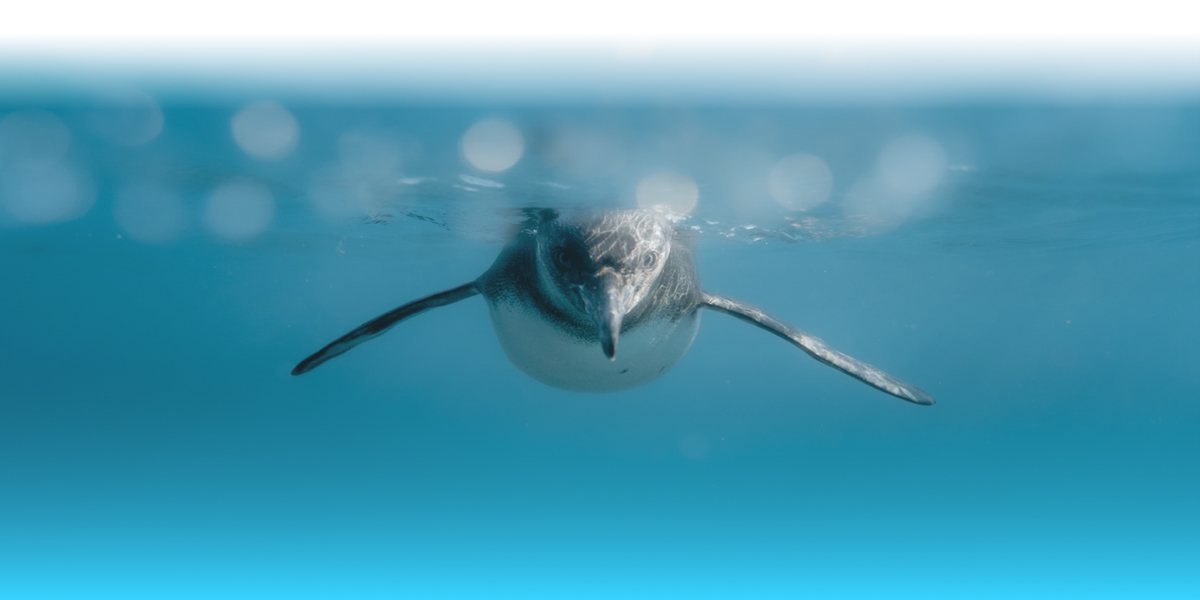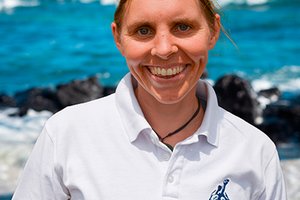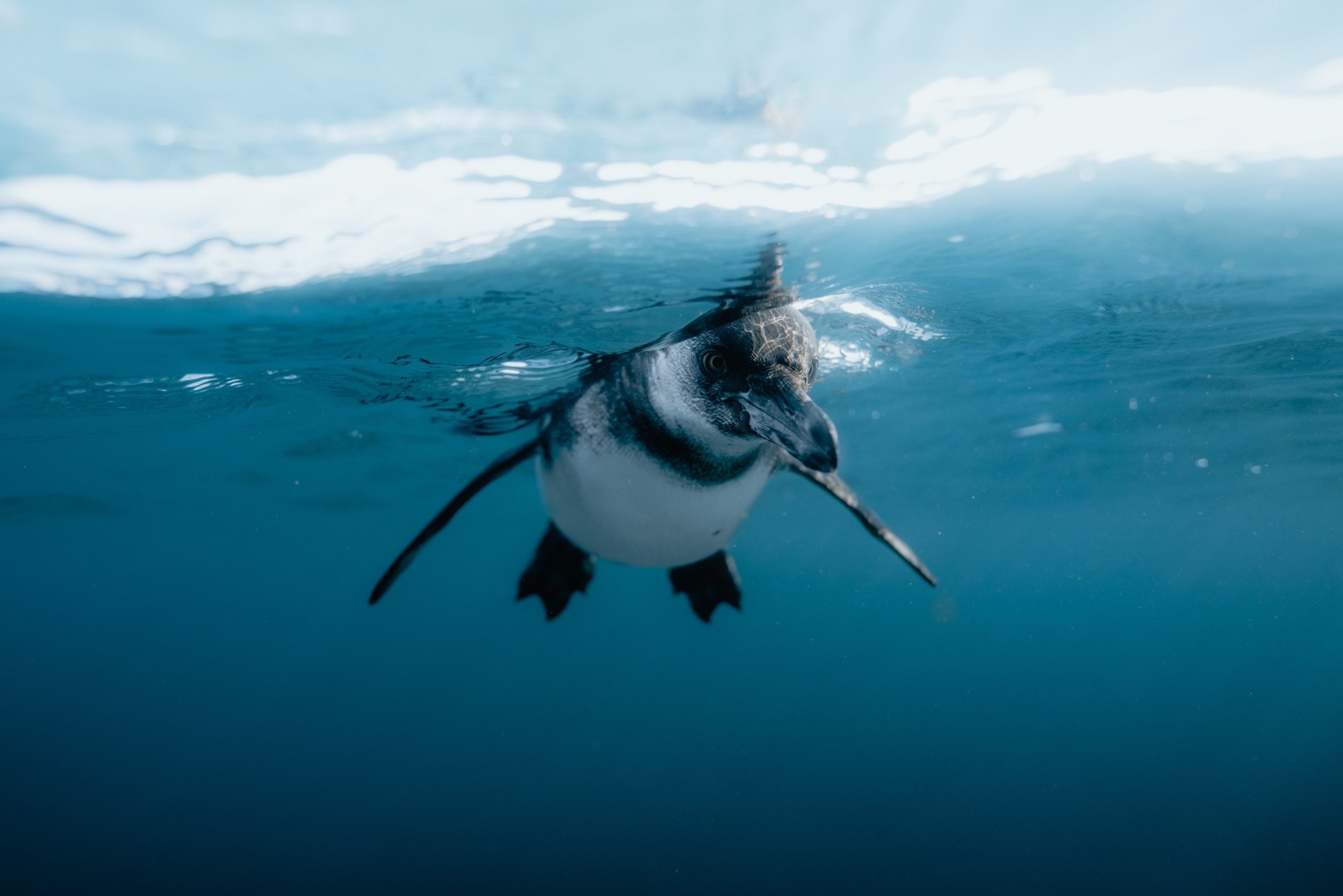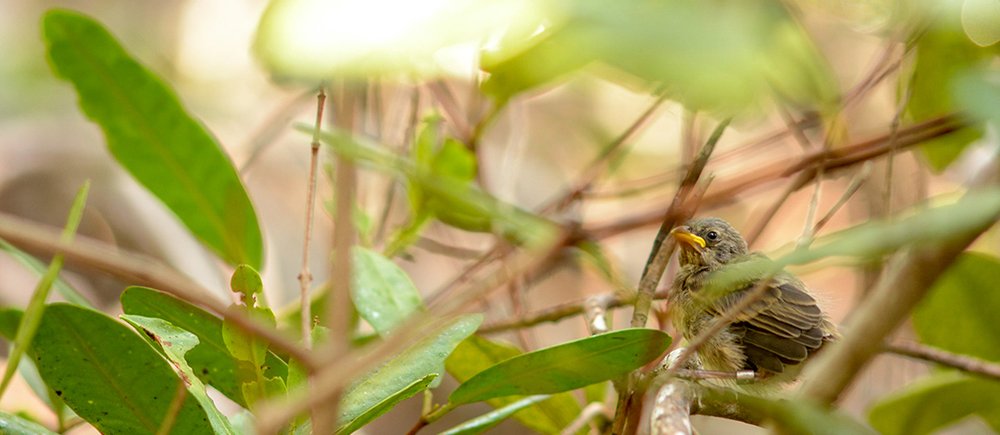
The Charles Darwin Foundation (CDF) and Galapagos National Park Directorate (GNPD) team are back from two months of fieldwork in a remote part of Isabela Island, a small patch of mangrove forest nestled between harsh lava fields reached by a six hour boat ride from Santa Cruz Island. This is the only place where the rarest bird in Galapagos, the mangrove finch, is found in the world.
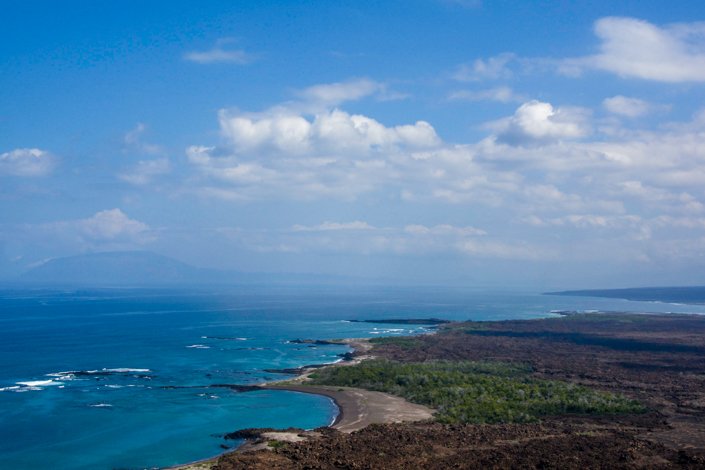
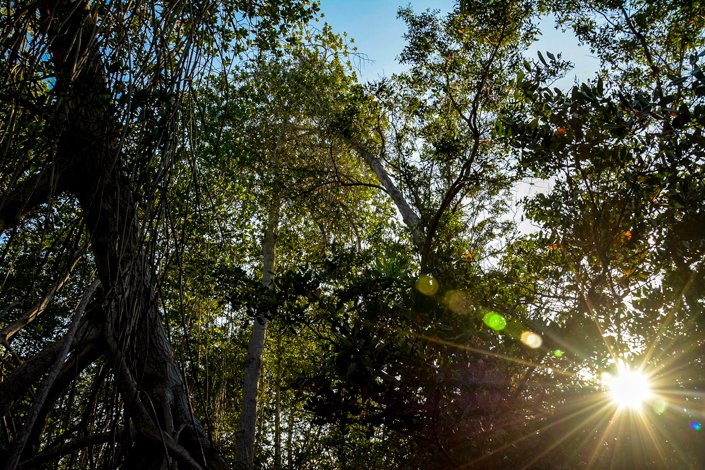
The team found only 10 breeding pairs this year, down from 12 the previous year. With intensive monitoring and management of the nests located high up in the top of thin black mangrove trees they were able to ensure successful fledgling of five chicks.
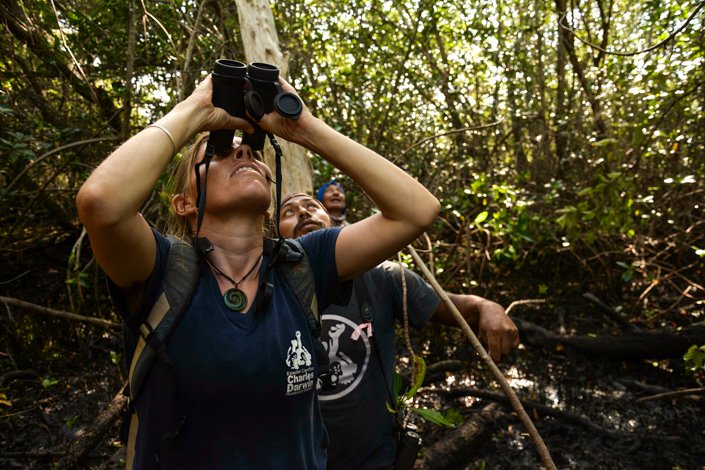
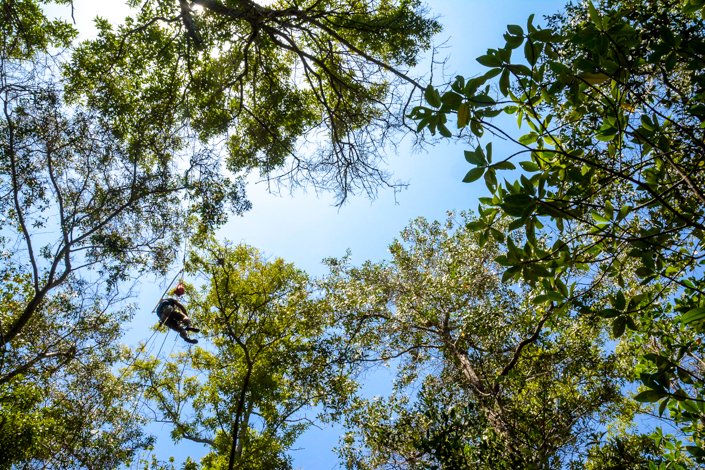
The species is threatened by introduced rats which eat the birds’ eggs, and an invasive parasitic fly (Philornis downsi) that sucks the blood of the chicks. Conservation management is carried out throughout the year to keep the rat population under control, and during the breeding season intensive management of every nest is conducted to reduce the number of fly larvae attacking the chicks.
A Philornis downsi larvae taken out of a nestling’s nostril.
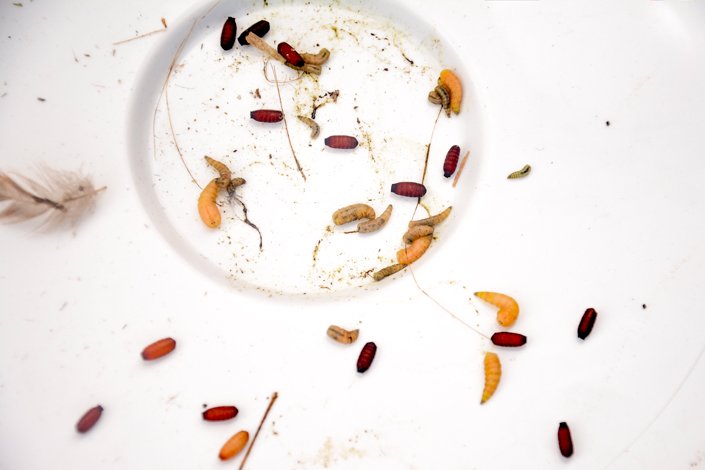
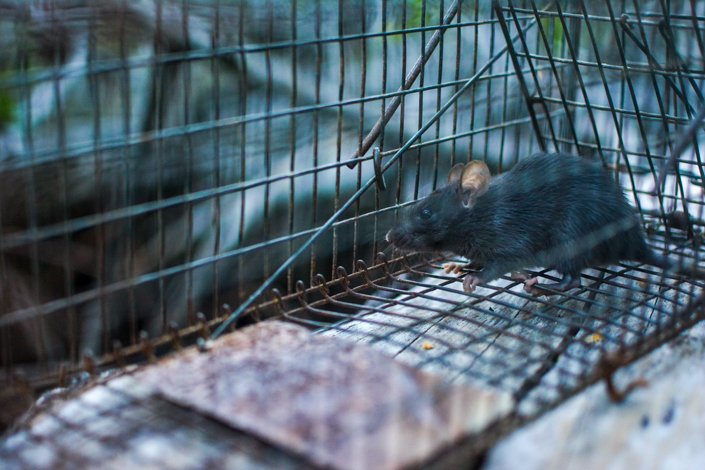
To protect the chicks, a natural pesticide needs to be carefully injected in to the base of the nest and some chicks require supplementary feeding.
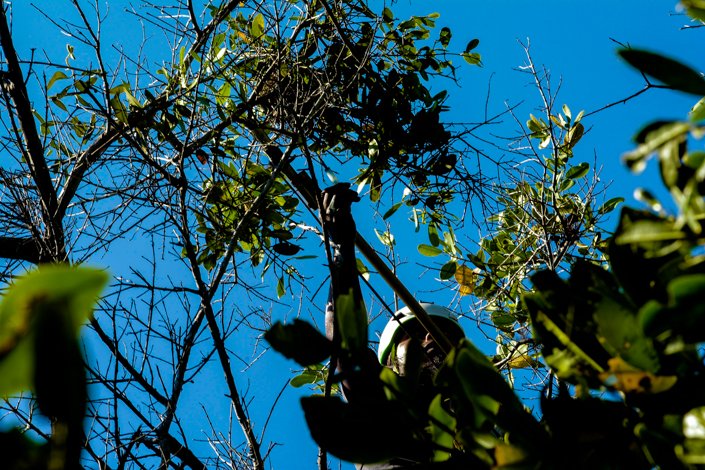
The team had hoped for more breeding pairs than in 2018, however dry climatic conditions resulted in only a few females laying eggs. Furthermore four nests were lost due to unprecedented strong winds. Project leader Francesca Cunninghame says:
“Although we had high hopes for this breeding season many pressures worked against the mangrove finches. However to have enabled five chicks to fledge in the wild is a real boost. These five fledglings represent an important addition to the limited population of an estimated 100 individuals.”
However, this year the team observed another problem – most of the black mangroves trees were sick or dying. These trees provide nesting sites for the birds, and the seeds provide caterpillars which are an important food source for the females to enter into breeding condition. Further research is urgently needed to understand what triggered the die back, but it appears that the trees, likely under stress from climate fluctuations, are being affected by a wood boring beetle.
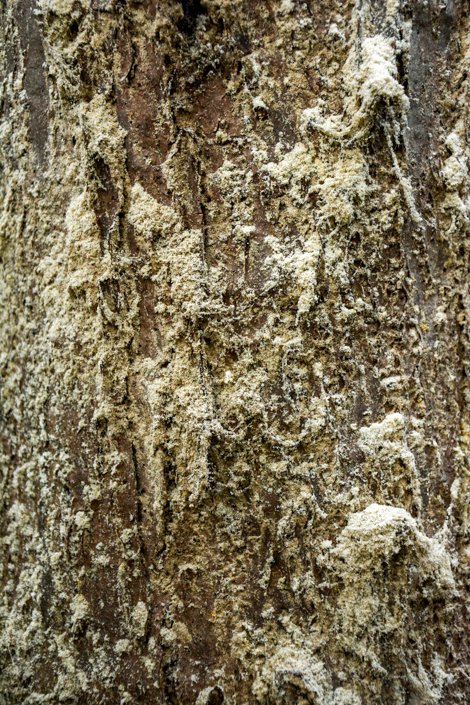
On a positive note, this season several young males were observed establishing territories and one young female that had been hand reared raised chicks– to see these individuals forming part of the breeding population demonstrates that the intensive conservation management is helping to stop further declines. CDF and the GNPD are committed to continue to work towards conserving one of the world’s rarest birds from extinction in the face of known and new emerging threats.
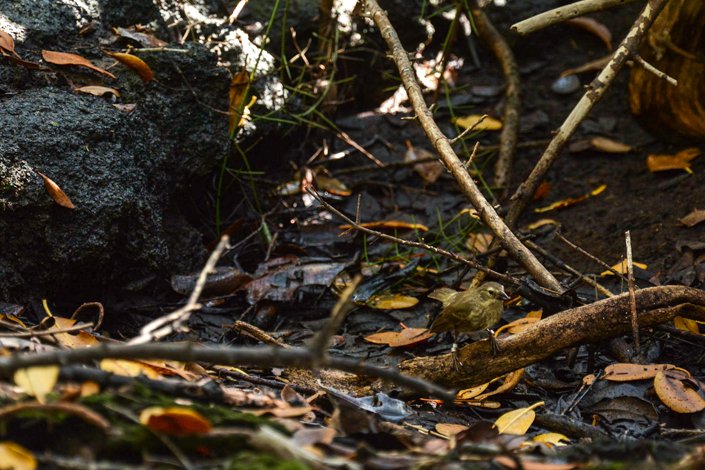
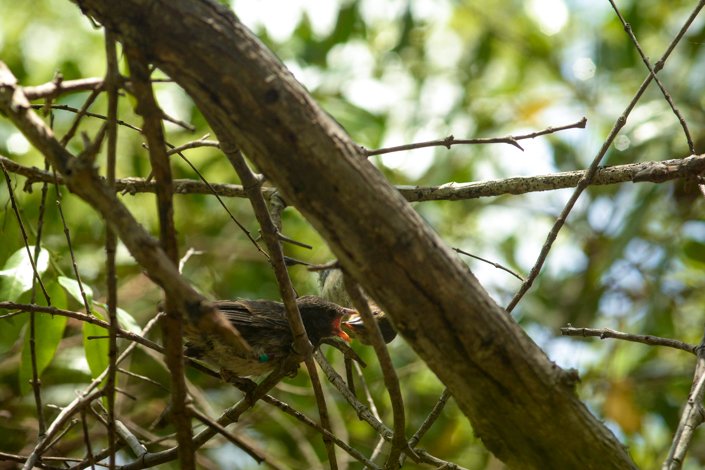
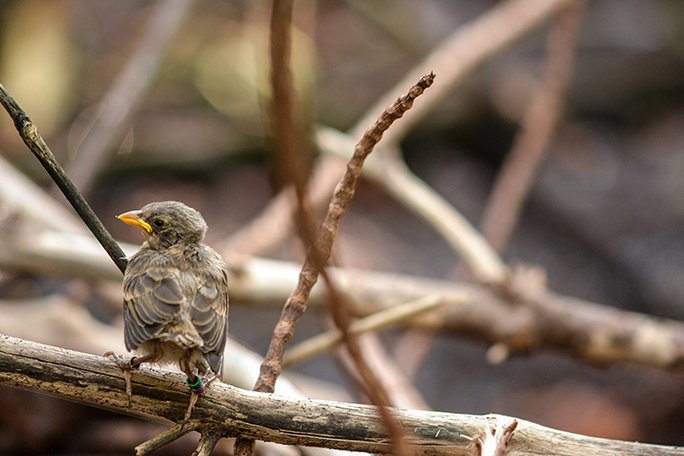
The Mangrove Finch Project is a bi institutional project of the Charles Darwin Foundation and the Galapagos National Park Directorate in collaboration with San Diego Zoo Global and Durrell Wildlife Conservation Trust. The project is funded by Galapagos Conservation Trust, The Leona M. and Harry B. Helmsley Charitable Trust via the International Community Foundation and Friends of Galapagos Switzerland.
